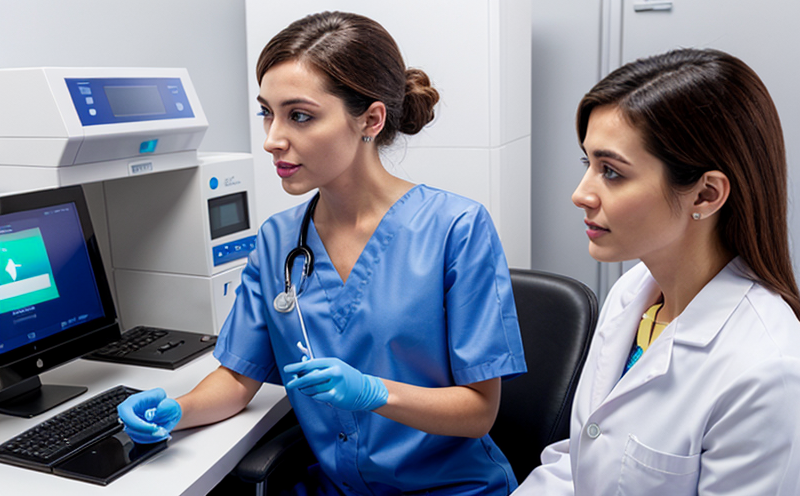Molecular Testing for Fish Meal Contamination in Animal Feed
In recent years, there has been an increasing emphasis on ensuring the safety and quality of animal feed across various sectors. One critical issue that has gained significant attention is the contamination of fish meal in animal feed with harmful pathogens, such as Salmonella, Listeria monocytogenes, and Vibrio species. Molecular testing plays a pivotal role in identifying these contaminants accurately and efficiently.
Molecular testing techniques like Polymerase Chain Reaction (PCR) and Next-Generation Sequencing (NGS) are widely used to detect specific genetic sequences of pathogens. These methods offer high sensitivity and specificity, allowing for the early detection of contamination at low levels. This is particularly important in the context of animal feed safety, where even trace amounts of harmful bacteria can pose significant health risks.
The primary goal of molecular testing in this domain is to ensure compliance with regulatory standards and international guidelines. For instance, ISO 21576-3:2019 specifies the procedure for the detection of Salmonella in animal feed using PCR-based methods. Similarly, FDA regulations mandate that manufacturers take proactive measures to prevent contamination by monitoring the supply chain rigorously.
Molecular testing also aids in understanding the genetic diversity and virulence factors of pathogens present in fish meal. This information is crucial for developing targeted interventions and improving preventive strategies. By identifying specific strains, researchers can tailor vaccines and treatments more effectively. Furthermore, molecular data helps in tracing the source of contamination, which is essential for implementing effective corrective actions.
The process of molecular testing involves several steps, starting with sample collection from batches of fish meal. Samples are then prepared according to standard protocols, ensuring minimal interference with the genetic material. After preparation, DNA extraction and purification techniques ensure high-quality templates suitable for amplification by PCR or sequencing by NGS. Once the samples are ready, advanced instruments such as thermocyclers and sequencers perform the actual testing.
The results of these tests provide insights into the presence, quantity, and type of pathogens in fish meal. This information is critical for quality assurance teams to make informed decisions about product safety. Regulatory bodies use this data to enforce compliance with strict hygiene standards. Consumers also benefit from safer products that meet international acceptance criteria.
Real-world applications of molecular testing include routine screening of incoming raw materials, post-production monitoring, and outbreak investigations. By integrating these tests into standard operating procedures, companies can enhance their reputation for producing safe and reliable animal feed.
Why It Matters
The contamination of fish meal in animal feed with harmful pathogens is a pressing issue that affects multiple stakeholders, including manufacturers, regulators, and consumers. The health risks associated with such contaminants are substantial, leading to potential outbreaks of foodborne illnesses among animals and humans who consume meat derived from these feeds.
- Health Risks: Pathogens like Salmonella can cause severe gastrointestinal distress in both livestock and pets. In extreme cases, they may lead to death if not treated promptly.
- Economic Impact: Contaminated feed can result in significant financial losses for producers due to increased mortality rates among animals and reduced productivity. Additionally, recalls of affected products add further costs.
- Regulatory Compliance: Failure to comply with stringent regulations can lead to legal penalties and damage the company's reputation. Maintaining a high standard of safety is therefore essential for long-term sustainability.
In summary, molecular testing serves as an indispensable tool in safeguarding animal feed quality and promoting public health. By leveraging these advanced techniques, industries can proactively manage risks associated with fish meal contamination effectively.
Quality and Reliability Assurance
To ensure the reliability of molecular tests for detecting fish meal contamination, several key practices are employed by accredited laboratories:
- Standard Operating Procedures (SOPs): Strict adherence to established SOPs guarantees consistent results across different batches.
- Calibration and Maintenance: Regular calibration of instruments ensures accurate measurements. Proper maintenance prevents instrument failure during critical testing phases.
- Quality Control Samples: Use of internal controls helps validate the accuracy of test outcomes by comparing them against known standards.
The reliability of molecular tests is further enhanced through collaboration with recognized industry bodies and continuous improvement initiatives. Accredited laboratories follow international standards such as ISO 17025 for laboratory competence, which emphasizes robust quality management systems.
Regular audits and proficiency testing programs help maintain high-quality standards. Participating in these assessments allows labs to benchmark their performance against peers globally. This ensures that all tests conducted meet the highest scientific and technical requirements.
International Acceptance and Recognition
- ISO Standards: Many countries recognize international standards such as ISO 17025 for validating laboratory capabilities, ensuring uniformity in test procedures worldwide.
- FDA Guidelines: Compliance with FDA regulations is mandatory for US-based manufacturers. These guidelines outline specific requirements for preventing contamination and maintaining product safety.
- OECD Recommendations: The Organisation for Economic Co-operation and Development provides recommendations on best practices in food safety testing, which are widely adopted by member countries.
The acceptance of molecular test results varies across regions but generally follows these guidelines. Laboratories often seek accreditation from bodies like the American Society for Testing and Materials (ASTM), European Committee for Standardization (CEN), or International Organization for Standardization (ISO) to gain broader recognition.
Accreditation not only enhances credibility but also facilitates trade between nations, as it assures buyers that tests meet internationally accepted quality benchmarks. This is particularly important in the globalized market where suppliers and customers operate across borders.





